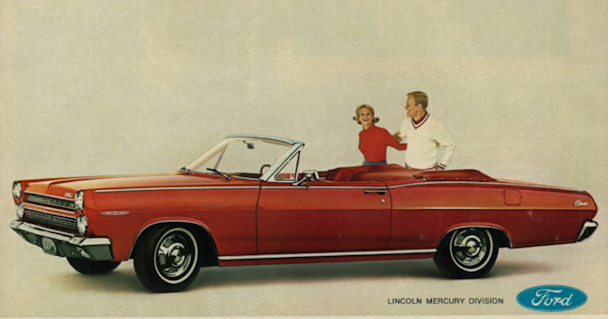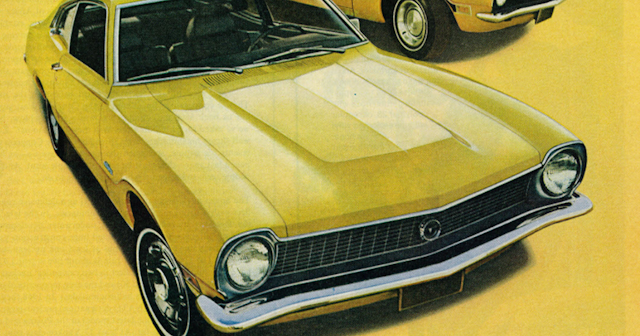
Advertisement

Standing 75 years strong, the creative relationship between Ford and WPP had been an enduring rarity in advertising / Classic Film - Flickr
As Ford splinters its advertising business after a long marriage with WPP in favour of a “multi-agency” proposition, The Drum unpicks what happened behind the scenes and what it means for the future of dedicated agency models.
Since April, a $4bn cloud has loomed large over WPP’s Global Team Blue (GTB), the bespoke agency built to service the global Ford advertising account. Despite efforts to convince the carmaker it was still the best (and only) group to handle creative, after a six-month review, Omnicom’s BBDO has been named lead agency with Wieden+Kennedy assigned as an innovation partner to special projects.
Standing at decades old, the creative relationship between Ford and WPP had been an enduring rarity in advertising.
It started with JWT 75 years ago in 1943 (before it was acquired by WPP in 1987) and while it will continue in some form – with WPP retaining activation and media (which was never up for review) as well as several other bits of business – BBDO’s appointment as creative agency of record agency is undoubtedly a blow to the GTB one-agency model.
GTB was established in 2006 with the integration of five WPP agencies, including JWT, Ogilvy, Mindshare, Y&R and Wunderman, to work explicitly on the Ford account under the name ‘Team Detroit’.
Just two years ago, WPP decided to bring together Team Detroit, Blue Hive (the bespoke agency that handled Ford’s European through-the-line business) and Retail First (another US Ford agency) under the single GTB unit. It's headquartered in the shadow of Ford's corporate campus in Dearborn, Michigan.
The agency employs more than 3,000 people, across six continents in 84 markets and, though it works with some other clients, Ford was its largest by some degree.
What happens to this vast number of staffers in light of the new model is not yet known. It is understood that recruitment and talent had been stable while the review was ongoing (a cursory glance at its LinkedIn page shows it was still hiring). At the time of writing The Drum was awaiting comment from WPP about what the outcome of the review means for employees.
In an earlier statement, WPP said it would "work closely with Ford on the shape of its future relationship and the impact on its people".
The Drum understands cracks had been forming behind the scenes for some time ahead of the review.
Chief executive Mark Read used his first investors call after succeeding Sir Martin Sorrell to downplay concerns from analysts about competitor W+K being called upon by Ford to deliver a fall campaign for the US market (the car maker’s biggest market where it’s estimated to spend $2bn a year on ads).
In its RFP, it was reported Ford specifically called on GTB to address its “culture” which executives didn’t think has been conducive to producing world-class creative.
The Drum understands attempts to retain the entirety of the business had seen WPP pitch a more ‘open source’ solution that would have given the brand access to greater resources within the wider WPP network, not just GTB.
However, speaking to The Drum before the review concluded, a recently-departed ex-senior staffer claimed tensions had been bubbling over what they described as the “mechanical, dictatorial, clinical if you like” way Ford’s marketing team (AKA the “Fordies”) dictated GTB's processes.
“The relationship between Ford and GTB was an arranged marriage,” they added. “Two groups of people put together and forced to get along.”
The former GTB-er went on to allege the "entire focus of GTB" is [creating] work that will get through the "convoluted process that existed between GTB and Ford".
“Many of the best ideas never even reached the senior Ford guys, they were killed early on, often by the agency itself, because ‘Ford will never buy/do that, they're too conservative’ or ‘the idea is too risky’. The process was incredibly frustrating.”
GTB also suffered the exit of long-time global chief creative officer Toby Barlow in February 2017 while John Gray, its director of platforms and partnerships, also left for Pinterest in 2017 after eight years.
GTB and WPP spokespeople would not comment on claims made by the former staffer. Ford simply said it "valued the talented team at WPP" when asked last week.

In a statement announcing the move to BBDO, Ford marketer Joy Falotico said it was “excited to partner with world-class creative agencies to unlock the full potential of the iconic Blue Oval”.
According to Ford, WPP remains a “key part” of a new “multi-agency team”. Along with media and activation, it will retain shopper and performance marketing; CRM; all advertising for its Lincoln line; China ad operations with its joint venue partner and multicultural and Tier Two dealer advertising.
Ford’s reformed roster is expected to save it $150m per-year – with efficiencies also being gleaned from investing in 100 new in-house marketing roles across branding, digital labs and media partnerships.
Ahead of the review's outcome, Tom Denford, chief strategy officer at media consultancy ID Comms (which had no connection to the pitch), said that – outwith cost – there was "no real compelling reason" for modern brands to put all of their creative work into a single group.
“It's not often talked about publicly because it's much more interesting to [pitch it as being about] ‘integrated thinking’ and ‘more discipline in management’, or the ability to attract the best talent through aggregated scale but really [these kind of models] are a commercial proposition,” said Denford.
“One of the things that’s really changing is advertisers are now thinking creativity is so important and the risk of working with giant big agencies is that it becomes a bit of a factory process – you lose the creative touch… great, or transformative creative, can be made by a perfectly small, focused agency; you don't need the scale of an Ogilvy in order to do that.”
The announcement of Ford’s creative review came less than a week after Sorrell – the orchestrator of this structure – stepped down as chief executive. The timing indicated that with a change in leadership came the opportunity to question the structures he put in place to service mega-clients like Ford.
When Read was officially anointed as the holding company’s new boss, he was quick to admit that the era of “horizontality” – getting different group P&Ls to work together under a singular entity – ushered in by Sorrell needed fine-tuning.
Frank in the assessment that clients were demanding a more flexible, less integrated approach from agencies, Read admitted a few months ago he had already started to look at how best to foster collaboration across the wider network.
Whatever new operational structure had been pitched to Ford might just have been the first manifestation of Read’s new vision – but now we’ll have to wait to see what shape that takes.
But what is certain is that these models are under the microscope. GTB has long been a paradigm of what holding giants could offer clients – creative and media bundled into "a single point of contact and accountability" as ex-chief Sorrell put it.
WPP has delivered a number of these 'one agency' propositions: Team WBA for Walgreens Boots Alliance; Team Red for Vodafone and Team Air for Emirates.
In May this year, BP even bought into an integrated offering in the form of Team Energy, which also includes a “flexible media model” for BP called EnergyMedia that will pool talent from agencies including Mindshare, Essence, Neo and Possible.

However, WPP's attempts to bundle talent from different P&Ls into a unified one for clients hasn't always come up roses.
Aside from Ford, take Team Bank of America which was displaced in 2015 when Interpublic’s Hill Holliday won its $1.6bn creative account.
Before that, in 2008 WPP won Dell’s advertising business and started a 1000-staff strong custom agency from scratch called Enfatico, which a year later was spun into Y&R before splitting.
But other holding groups, and indeed brands, are persevering. McDonald’s relies on DDB's We Are Unlimited for dedicated creative services in the US, for instance. P&G, meanwhile, has experimented with pooling talent together from rival agencies.
FMCG giant Unilever has also said it’s testing a WPP ‘team’-style creative model with four brands that brings together agencies within holding groups into a single team.
Speaking last month, Denford said whatever happened with the review would send a real message about WPP's intention and future. He predicted that untangling and dismantling the existing operation would be playing on the minds of Ford. “For it to move would take something quite exceptional commercially," he noted.
Denford's view was that for Read, it had the risk of being a "lose-lose situation" because even if WPP had retained the account it could be on potentially punishing commercial terms and Ford was going to want an operational makeover at GTB.
"So, it's hard to really see what the upside [would be], other than just keeping short-term investors happy,” he said at the time.
WPP and GTB's next steps will be watched closely, and with interest.
In a follow-up note, senior Pivotal analyst Brian Wieser said the news was negative for WPP, but “not as negative as it could have been, given the parts of the business it is retaining, which are all generally the faster-growing aspects of any given account”.
There might be an immediate and slight impact for WPP shareholders (stock dipped slightly by 0.90% after a statement was published on Tuesday morning, but at the time of writing had already recovered to just a 0.44% dip). But Wieser told The Drum ahead of the announcement that there might also yet be a silver lining to that big cloud for WPP – it could better position the business to compete for other accounts.
“That’s a double-edged sword too, because you can’t keep a lot of expensive talent around for too long,” he noted.
Whatever comes next, the fact WPP is understood to have pitched a more open model within the holding group to Ford points to the fact Read is truly ready to get the wheels moving on a less siloed, more nimble proposition for clients.
While Sorrell's philosophy of horizontality has all but been banished from WPP's lexicon, there will still be a challenge for Read in getting different P&Ls, in different markets, to collaborate on a brief-by-brief basis if WPP is truly to flex the muscle of its mammoth infrastructure for the world's biggest advertisers.
In the background too, questions linger about what this all means for bespoke agencies like GTB, and whether there's a place for aggregation when it comes creativity.